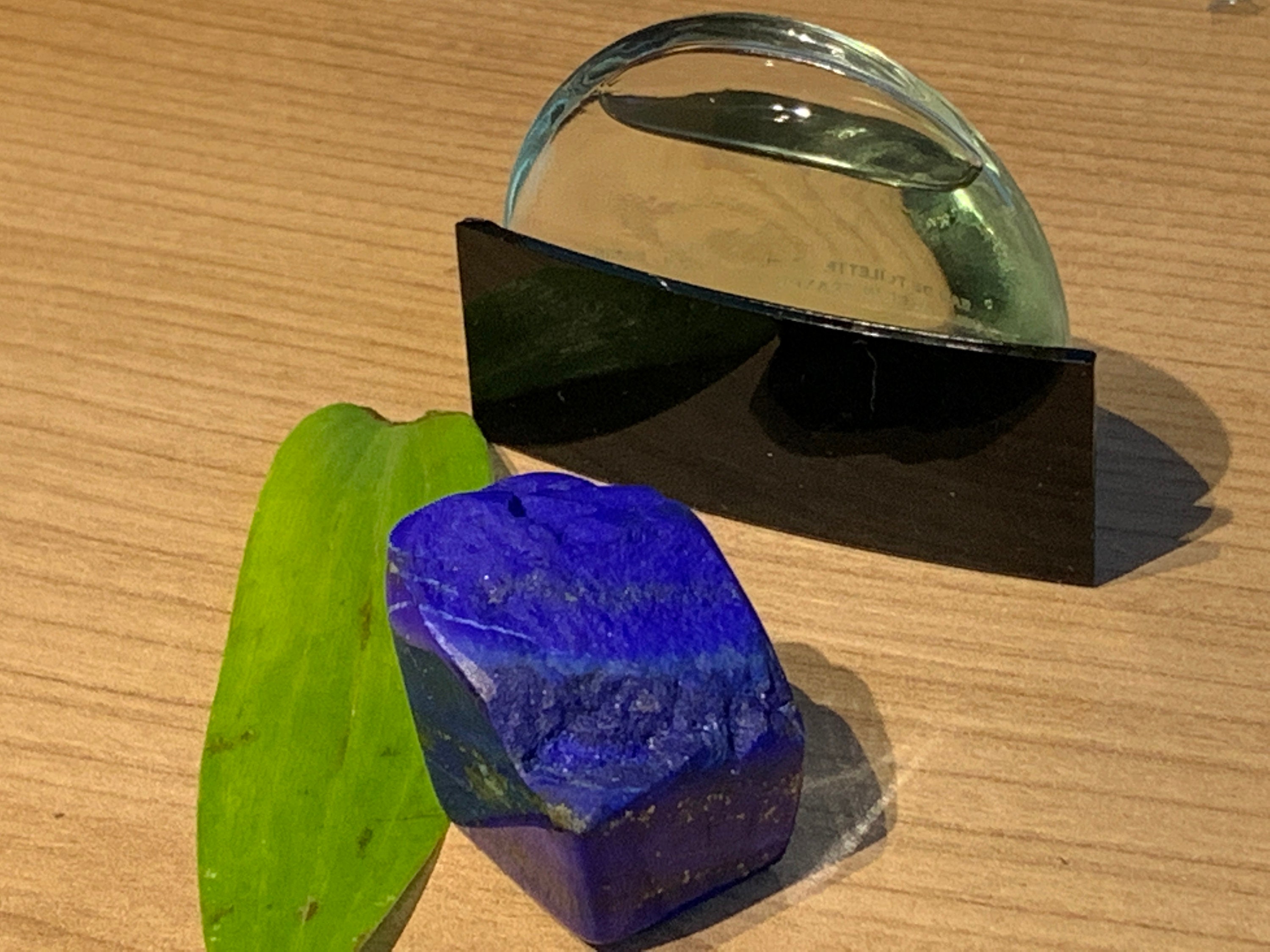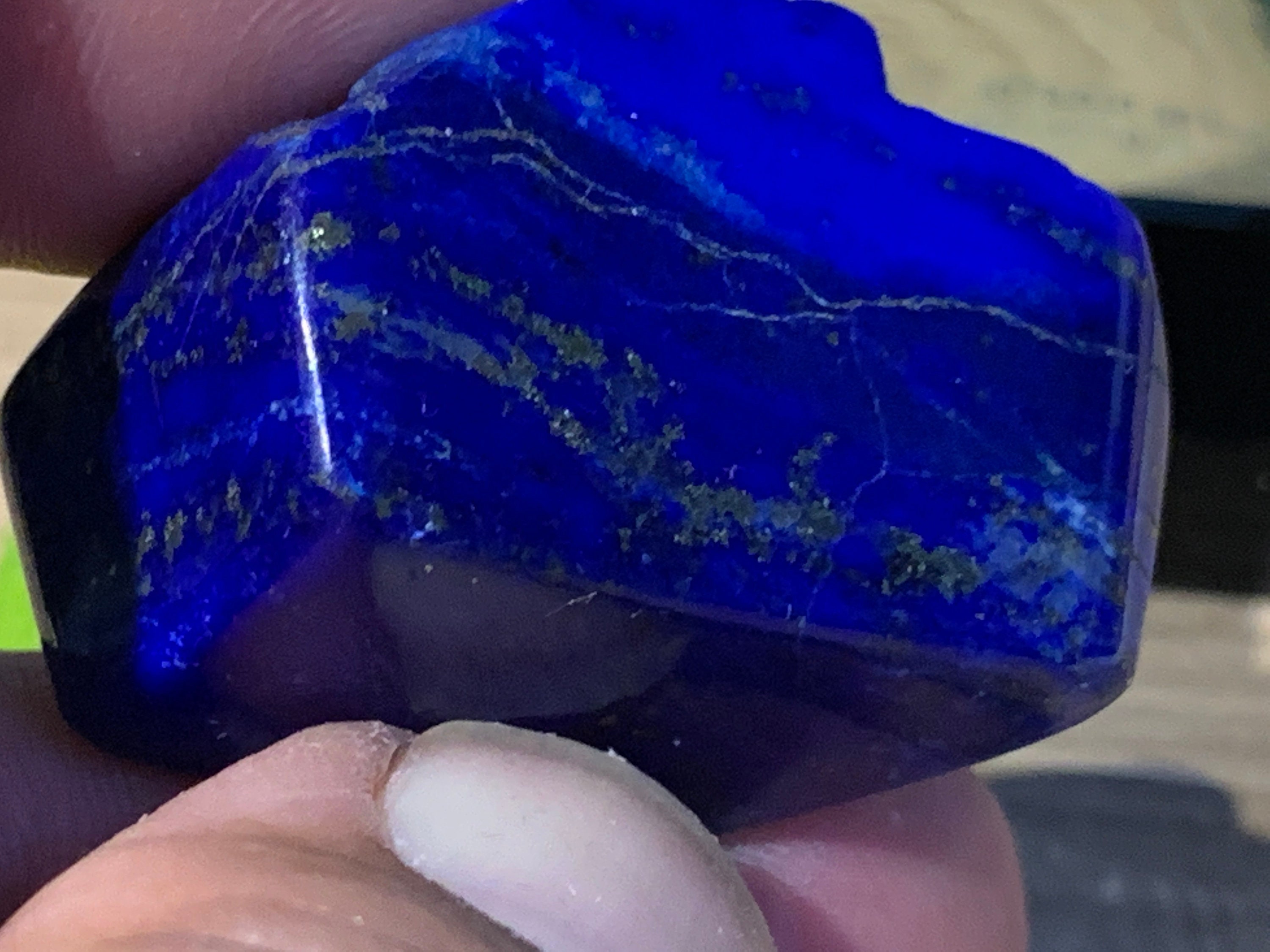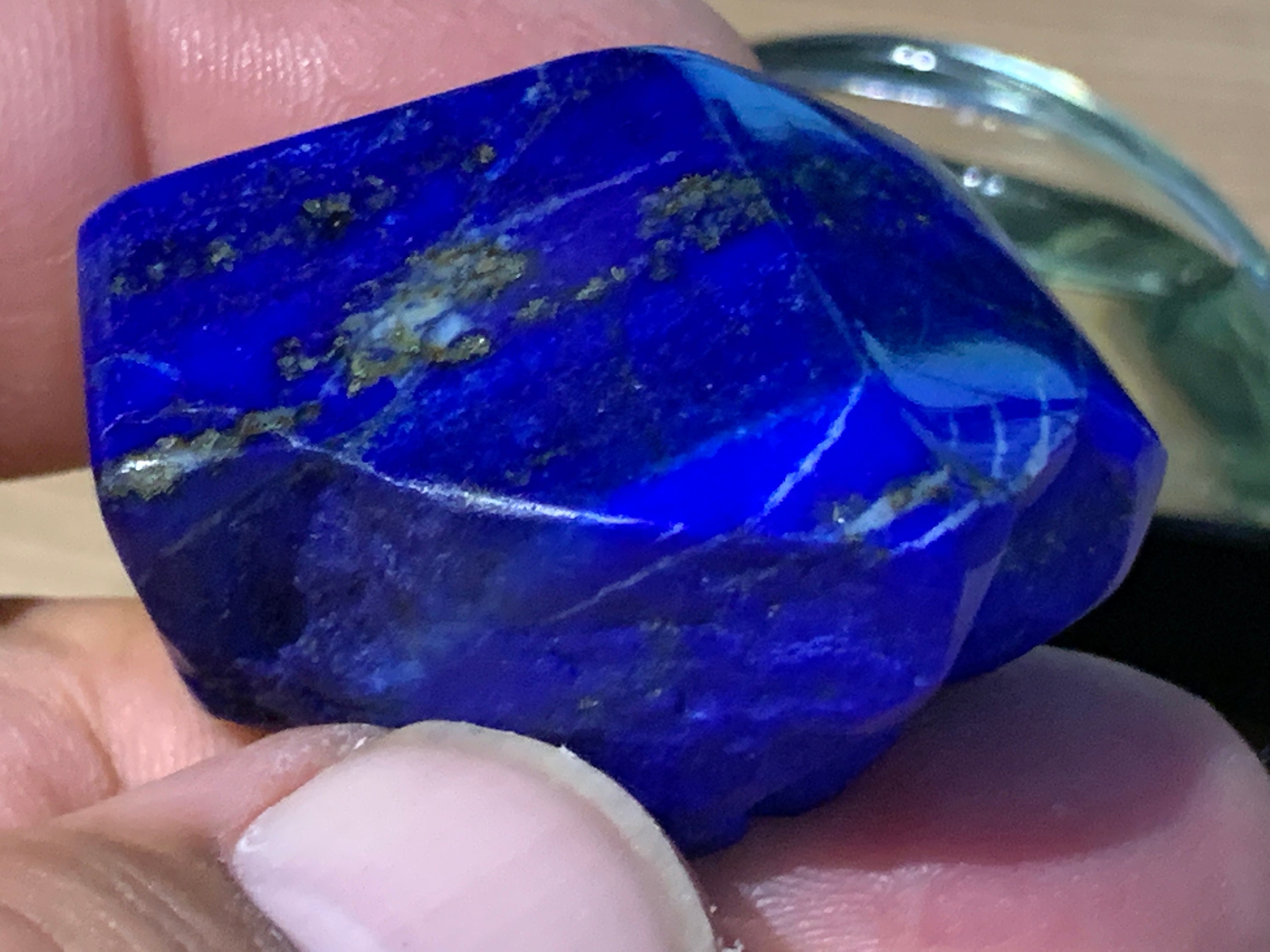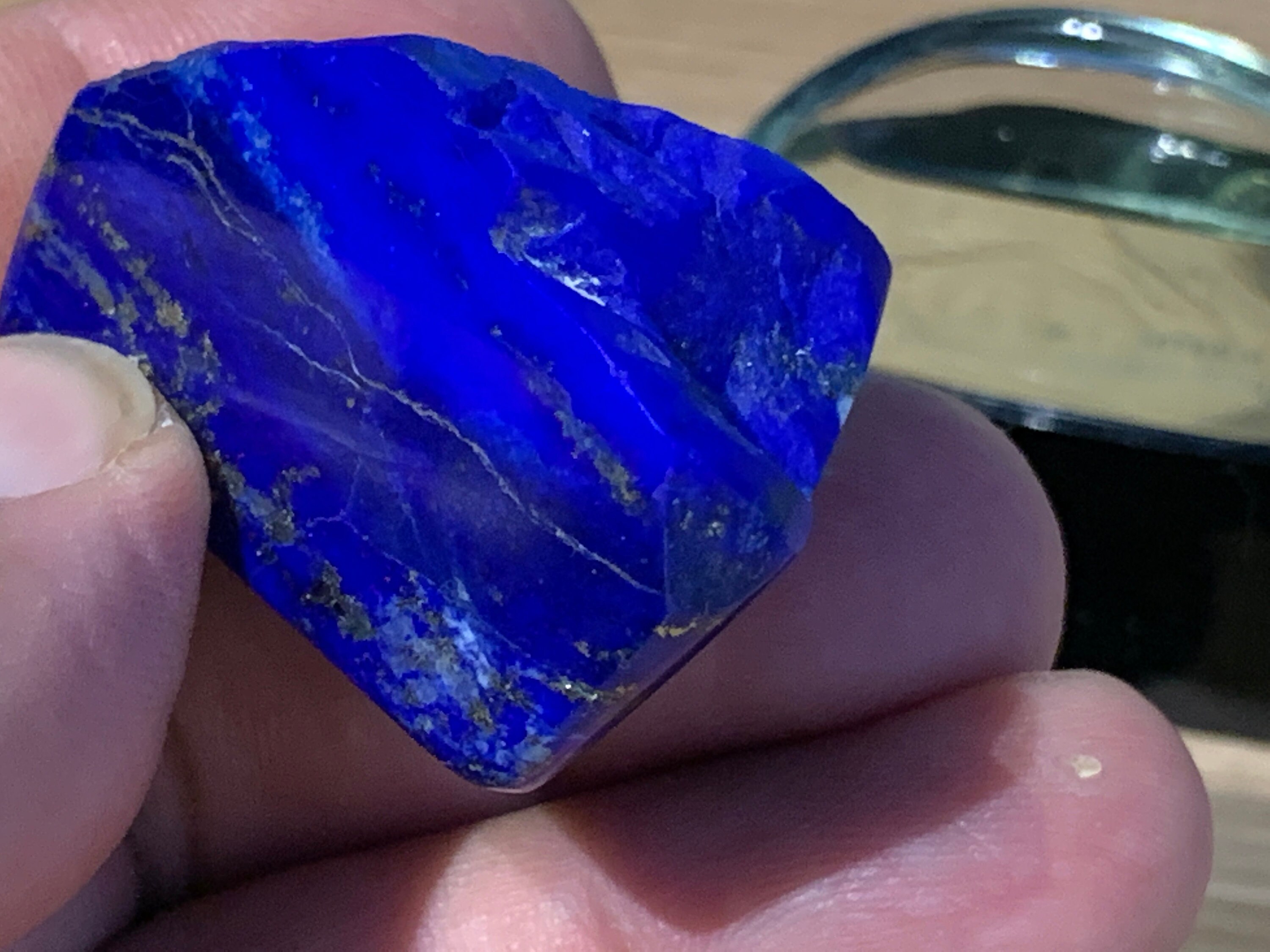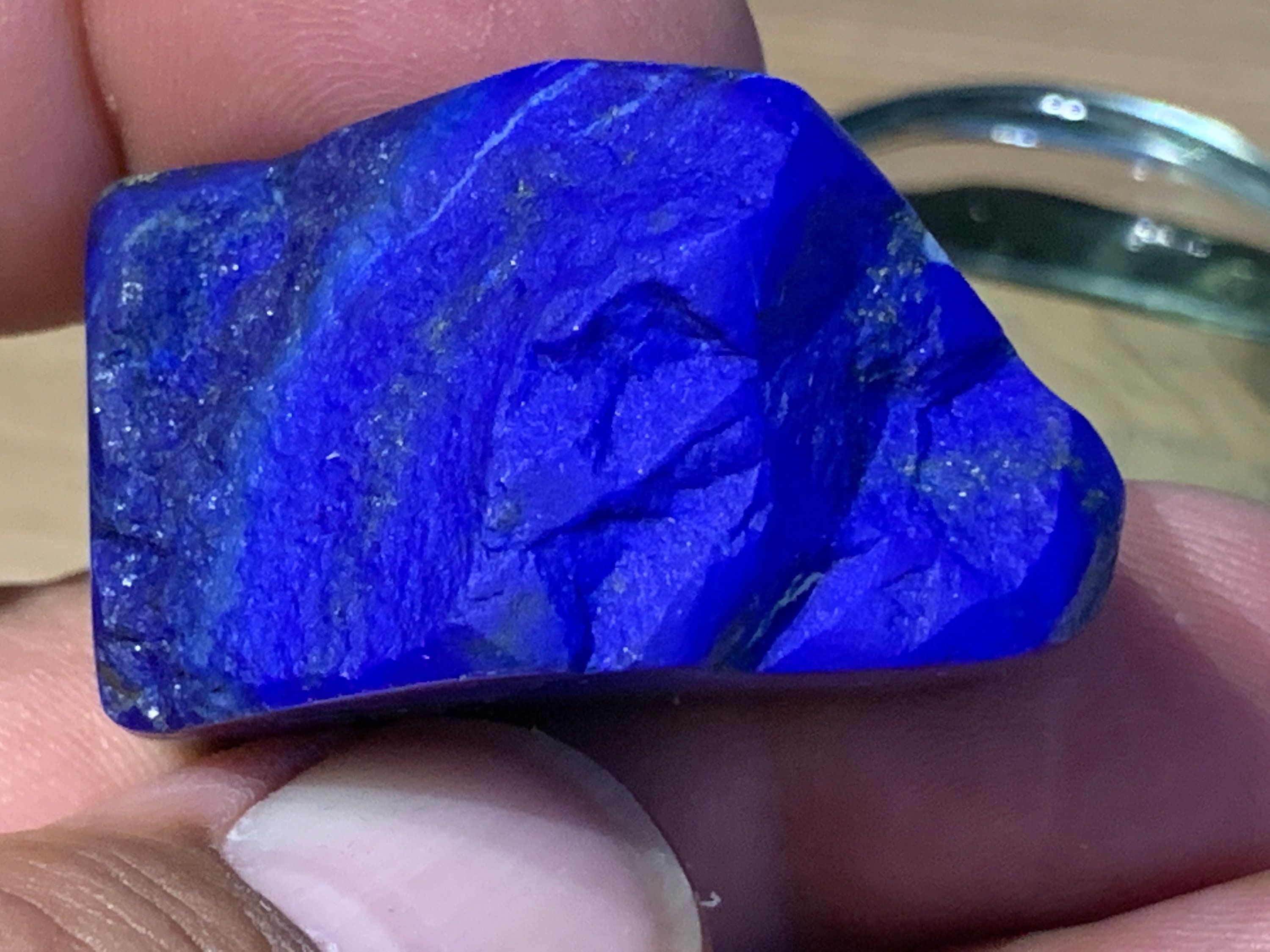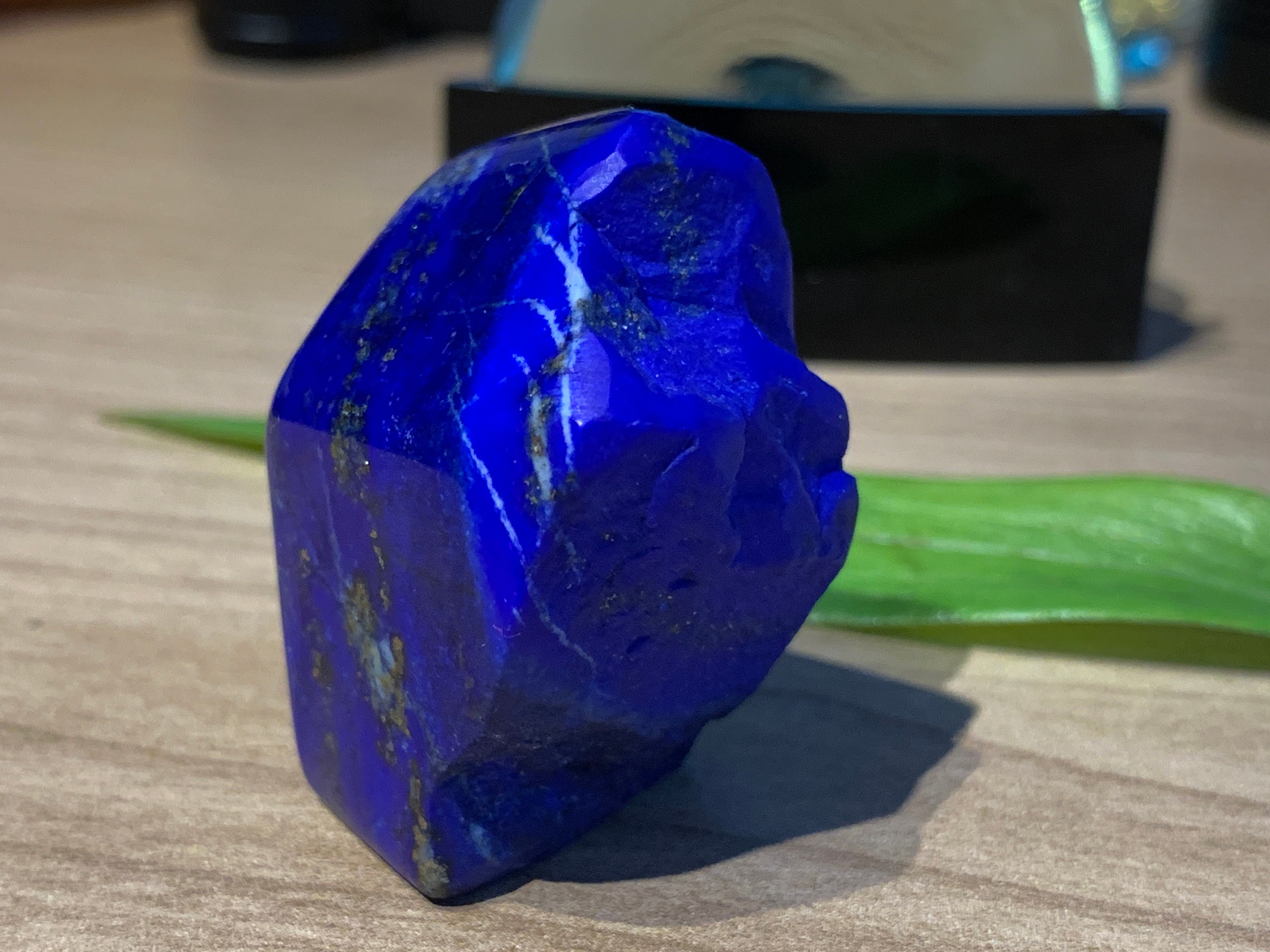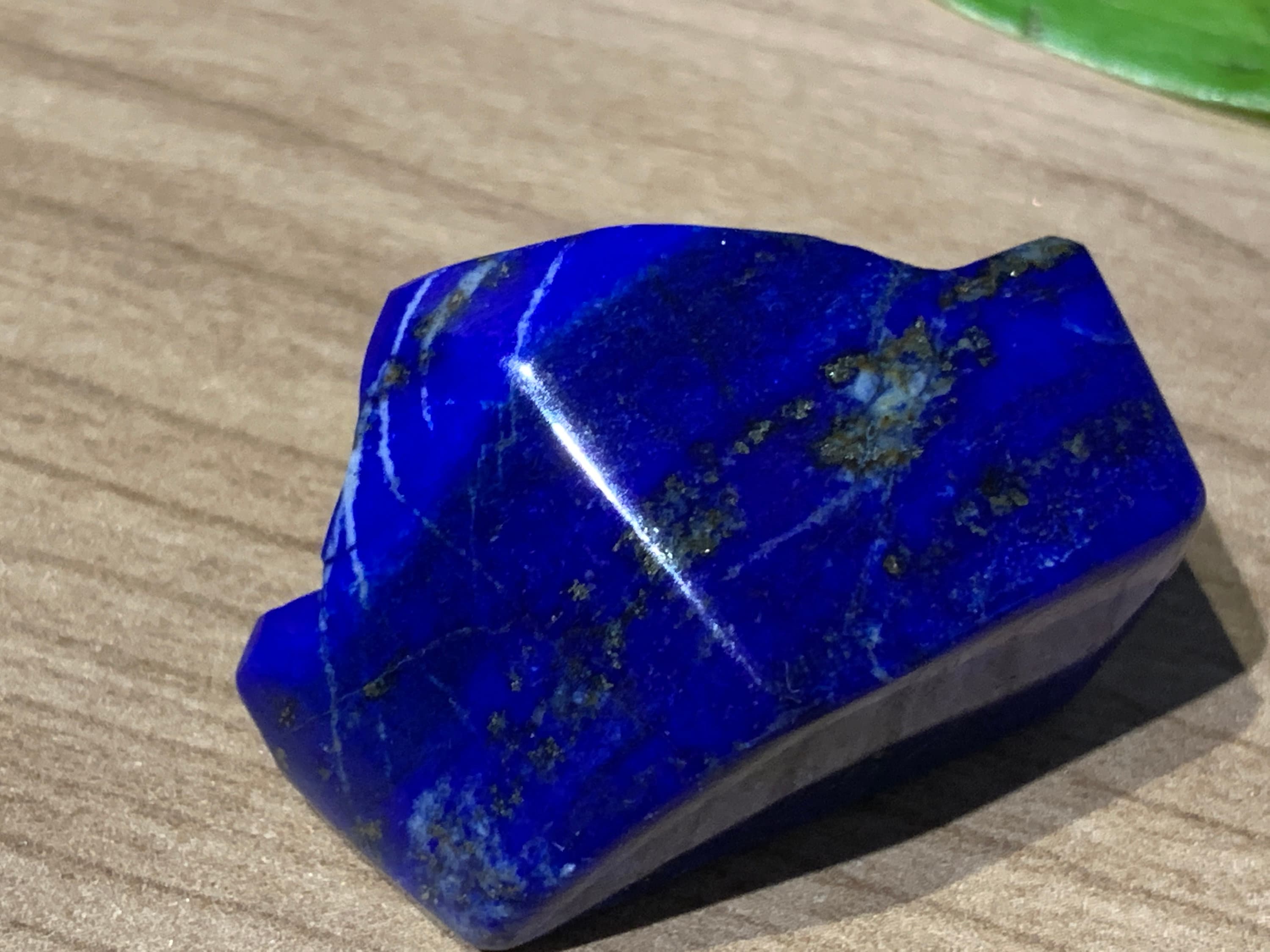A very beautiful lapis lazuli in natural color in jewelry quality.
Blue with inclusions in pyrite.
A beautiful, deep, cool shade of blue, like the Atlantic Ocean. On one side, it glitters with its beautiful pyrite (gold color) like the galaxy, and on the other side, you dive into the depths of the Atlantic Ocean.
Much knowledge about the stone of the pharaohs and kings, the lapis lazuli
Lapis lazuli pendant set in silver
The name lapis lazuli is derived from the Persian word azul, meaning blue, and the Latin word lapis, meaning stone. Lapis lazuli is one of the oldest gemstones used in jewelry.
It has been known for about 6,500 years. I've been studying this mysterious blue stone for about 25 years. In that time, many of these blue treasures have passed through my hands and brought a sigh of relief to enthusiastic enthusiasts.
It's just a "blue" one...
Well, not if you look more closely. On the one hand, you discover the depths of the oceans, the "Atlantic Ocean," and on the other, the sky, or rather the galaxy, represented by the pyrite, the golden shining stars of the sky.
But wait! That's not all!
If you look deeper into this fantastic gemstone, you'll even discover an image of Earth as seen from the moon. I think an astronaut would be only too happy to confirm that.
But is it just a gemstone for astronauts and physicists?
It is also the stone of pharaohs and kings, but not only that. Times have changed; in ancient times, it was truly revered by Egyptian rulers and considered a status symbol.
It was dedicated as a grave offering to the wealthy people of that society.
Lucky beetles, called scarabs, were produced. Cleopatra, the great ruler of the time, used lapis lazuli pigments to further enhance her cat-like eyes. She loved lapis lazuli and turquoise.
The great general Napoleon had this protective stone with him as a scarab and recorded in his notes that it was thanks to it that he was not seriously injured.
Kaiser Wilhelm also owned a lapis lazuli. People attributed divine power, security, and infinite love to the blue gemstone.
Therefore, it was an important protective stone for the Greeks, Romans and Native Americans, among others.
What is lapis lazuli made of? It is a deep blue, Tertiary metamorphic rock. It consists of about seven different minerals: lazurite (blue), pyrite (gold), diopside, sodalite, hauyne, ankerite, and hematite. Where does lapis lazuli occur? It has been found in Chile, Canada, Russia, Burma, California, and especially in Afghanistan.
Afghanistan boasts some very beautiful deposits. Lapis lazuli has been mined in the Afghan province of Badakshan for over 6,000 years. Lapis lazuli's effects on the body: It is said to have special healing properties. It reduces deposits in the blood vessels, thereby also reducing the risk of strokes or heart attacks.
It ensures a comfortable sleep and restful nights. Placing the stone under the pillow will clear your mind for inspiration. Throughout history, lapis lazuli has become a stone of friendship and truth. It helps its owner make clear decisions. Its deep blue color has a cooling and calming effect.
The stone proves to be a valuable aid for concentration and learning problems because it penetrates deep within the mind. It has an antispasmodic effect on neuralgia and lowers high blood pressure. Lapis lazuli is also said to have a special effect on the psyche.
Not only does it promote intuition and strengthen the self-confidence of shy people, but even those with a choleric personality calm down more quickly under the soothing influence of lapis lazuli.
It is also said to balance gloom and melancholy, release inner blockages, and have a particularly invigorating effect on our ability to concentrate. When placed on the throat and forehead chakras, it is said to relax and promote meditation.
Its effect is strongest there, the third eye chakra. History: People have always believed in the power of this stone and have also called it the "sky stone." It is said to bring peace, wisdom, and love.
Other cultures revered the gemstone as a friendship stone that strengthens self-confidence, promotes interpersonal relationships, and helps maintain true friendships.
The mining of lapis lazuli dates back to ancient times. Lapis lazuli has been mined in Afghanistan's Badakshan province for over 6,000 years. In ancient Egypt, lapis lazuli was a popular stone for amulets and ornaments such as scarabs. In other cultures, lapis lazuli was considered a sacred stone. In the Middle East, it was considered a magical stone.
When Alexander the Great brought it to Europe, it was used to make signet rings and figurines. Many palaces and churches (such as the Chapel of Padua) were decorated with lapis lazuli or its pigments. The cave paintings of Cappadocia are a legacy from ancient times.
The color was described as "ultramarine," which interpreted as "from across the sea." Well, it is a blue gemstone, one might say. In earlier times, lapis pigments were traded for more than gold. Even today, the stone is still very valuable. The most expensive blue of all time!
And what an incredible blue! The value of this stone to the art world is immeasurable, for the ultramarine of the old masters is nothing other than genuine lapis lazuli. The marble-like gemstone is ground into powder and stirred with binding agents to create brilliant blue watercolors, tempera, or oil paints.
Before 1834, when it was impossible to produce this color synthetically, the only ultramarine available was the valuable substance derived from genuine lapis lazuli, which we see today in many works of art. For example, many images of the Madonna were created with this color. The color was called ultramarine, which means "from beyond the sea."
It was also very expensive. For a time, it was even traded at a higher price than gold. But unlike all other blue pigments, which tend to fade in the light, it has lost none of its radiance to this day.
Nowadays, the blue pigment obtained from lapis lazuli is mainly used in restoration work and by collectors of historical paints.
At that time, however, ultramarine blue was not only valuable but so intense that it overshadowed all other colors.58
